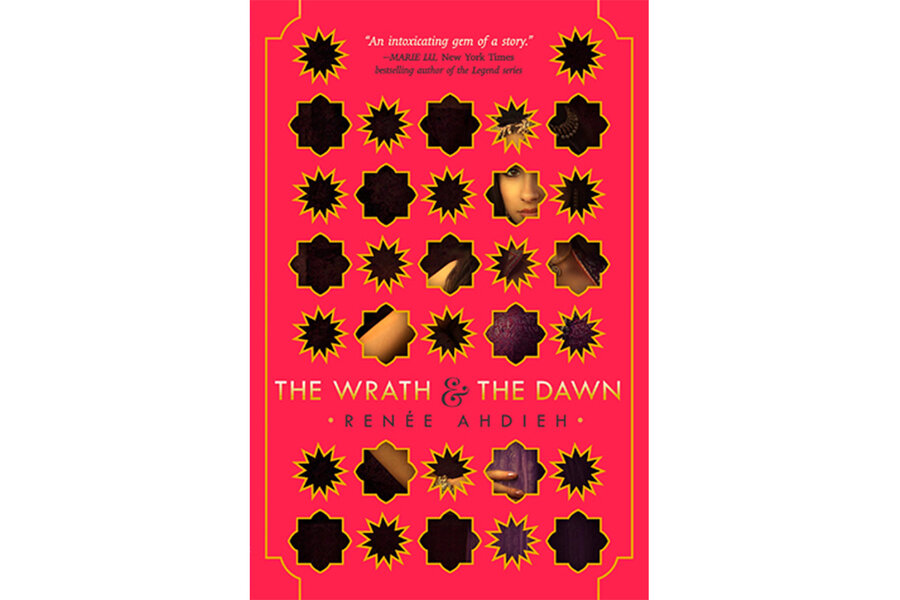'The Wrath & the Dawn' scores with a highly engaging retelling of 'One Thousand and One Nights'
Loading...
“You are cordially invited to the marriage of Khalid, Caliph of Khorasan & Shahrzad al-Khayzuran.... Funeral to follow at dawn.”
With an invitation like that, there was no way I could say no to The Wrath & The Dawn by Renée Ahdieh, a sumptuous retelling of the classic “One Thousand and One Nights.”
Fade in on a drought-ravaged Arabian kingdom, ruled by a young caliph who takes a new bride every night and executes her at dawn.
“Bloodthirsty boy-king,” mutter his people.
“Secret martyr,” whisper his closest aides.
“Murderer of my best friend, and a soulless monster who must die by my own hand,” cries Shahrzad al-Khayzuran, our gutsy protagonist.
When we meet her, Shahrzad has volunteered to be the caliph’s next bride, horrifying her family and enraging her childhood sweetheart. She plans to assassinate the caliph to avenge her best friend. Whether or not she succeeds, she has signed her own death warrant.
Lucky for us, Shazi is no one’s damsel in distress or princess in an ivory tower. Instead, girlfriend has plans to kick butt and exact revenge till the camels come home.
Our gal’s plan is to tell the caliph a tale so engrossing that when dawn arrives and she has not finished the story, he will stay her execution by a day to hear the conclusion. Lather, rinse, repeat.
It works – but fate has other plans. The more Shahrzad grows to know Khalid, the less she can maintain her vengeful fury. She begins to care for the man she calls a monster. In turn, Khalid’s fascination for his enchanting and smart-mouthed queen evolves into a deep respect, and then love.
But Shazi’s gamble sets off a deadly chain of events for the men in her life, all of whom race to rescue her by any means. Her father, Jahandar, strengthens the book's mild magical touch into something stronger, darker, deadlier. Her childhood love, Tariq, enlists his friends to foment a revolution and overthrow the caliph. It will all coalesce in one explosive confrontation … in the sequel.
Despite a rough start, there’s much to love in this book. The first 20 pages are a whirlwind of names and grievances, but once Shahrzad enters the palace and launches into her first story, Ahdieh hits her stride. Much like Shazi and Khalid’s relationship, “Wrath” and I had a rocky beginning that deepened in a lovely way.
I also grew fond of Ahdieh’s unorthodox style. The flowery strings of similes, barrage of one-sentence paragraphs, and narrative caesuras for luscious descriptive interludes would bother me elsewhere, but they felt so appropriate for an Arabian legend.
However, I must call out the paucity of female characters. Other than Shahrzad, there are really just two women: Shahrzad’s coquettish Greek handmaiden, and Khalid’s rival’s daughter, whose primary appearance is a sexy belly-dancing cameo. Every other woman is either dead or insignificant. With so many murdered women, I expected to hear of mothers and sisters, even of the brides themselves. The female perspective was sorely missed.
In contrast, the palaces and deserts teem with a legion of tight-lipped, angry men: Khalid, his protective general, a flirty captain, an Argus-eyed bodyguard, the rival sultan, an avuncular tutor, Jahandar, Tariq and his two friends, a nomadic ally, and more.
The men fuss, bluster, and plot, but few stop to ask Shahrzad what she’s thinking or feeling. They assume, almost to a man, that they can plot a course of action based on her initial, now-obsolete data point.
Thank goodness Shazi is a fearless rock star of a protagonist. Her charisma and moxie keep it all afloat.
In the end, you’ll have to decide for yourself what the many relationships really mean, especially Khalid and Shahrzad’s. Is it Stockholm Syndrome, rife with the allure of the illicit? Is it acquired taste? Or is it real love, born from two souls meeting their perfect match? Readers may disagree.
We can all agree, though, on the immersive power of Ahdieh’s work – an array of lush textures, heady perfumes, lavish feasts, exotic vistas, and savage repartee. “Wrath” is an opulent sensory experience, and one to ponder.
P.S. If you’re in a book club, consider this the Holy Grail for themed meetings. Here are my recommendations for an Arabian night:
Soundtrack: Anouar Brahem. For the uninitiated, start with “The Astounding Eyes of Rita,” which for oud enthusiasts or bass clarinetists (holla!) is a musical love letter.
Setting: low lighting; piles of tasseled pillows around low tables, scattered with spicy candles; Persian rugs and breeze-blown silk curtains; heavy on the red, purple, and gold.
Sustenance: figs (or Fig Newtons, I won’t judge), grapes, kebabs, pita bread, olive oil, mango chutney, and fruit juices. “Bil hana wa shifa!”








